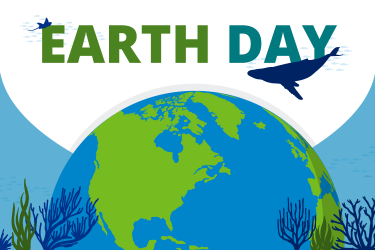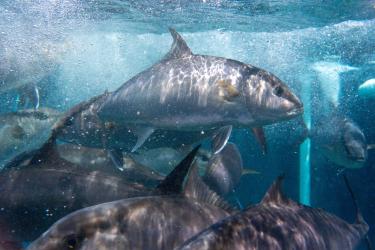NOAA scientists have created a number of cutting-edge tools to help seafood decision-makers adapt to climate change. These tools can inform managers, municipalities, and seafood businesses as they make decisions in the coming years. Across the country, regional fisheries councils and coastal communities are leading the way.
Adapting Our Management
Observations, forecasts, and predictive models can help explain what is happening to our seafood species now and what might happen in the future. But they do not tell us what to do about it. Instead, those actions must be decided by managers representing the community of seafood stakeholders.
Exploring the Future of Fisheries through Scenario Planning
In recent years, regional U.S. fishery management councils have oriented their decision-making toward climate adaptation. To do so in an inclusive way, several councils have turned to scenario planning, a tool for thinking through possible courses of action for an uncertain future. Scenario planning exercises guide participants to imagine a suite of possibilities for future conditions. They examine not just the most likely outcomes, but also futures disrupted by unexpected or anomalous events, such as the “Blob” heat wave. Together, participants distill these possibilities into a portfolio of scenarios. Talking through these shared stories about the future can help managers and stakeholders identify robust adaptation actions that make sense for multiple scenarios.
Prompted by the shifts of many key seafood species across management boundaries, the three councils along the East Coast, along with the Atlantic States Marine Fisheries Commission, teamed up to launch a joint East Coast Climate Change Scenario Planning project. On the West Coast, the Pacific Fishery Management Council partnered with the Nature Conservancy to use scenario planning to explore changing fish stock availability and productivity in the California Current ecosystem. Both initiatives involve multiple stages of consulting with stakeholders, reviewing the latest science, drafting and workshopping scenarios, and assessing their implications. These efforts help the regions develop shared narratives as they consider possible responses to the challenges that lie ahead.
Adapting Our Communities
Management decisions play a crucial role in adapting our seafood to future conditions: they set policies, develop regulations, and direct funding. But other factors that influence our seafood supply lie outside the authority of fisheries managers. Ultimately, many of the steps toward climate adaptation fall directly to fishermen, businesses, and communities themselves.
Looking to Aquaculture as a Climate Adaptation Strategy
Wild-caught fisheries, of course, are only a portion of our seafood supply. But aquaculture, which supplies the remainder, faces its own challenges from climate change. Like ocean fisheries, aquaculture operations are threatened by rising temperatures and ocean acidity. But they must also contend with changing rainfall patterns, which impact coastal salinity, and rising sea levels, which can swamp stationary aquaculture farms as they reshape coastal landscapes.
However, as relatively self-contained operations, fish and shellfish farms are sometimes in a better position to rapidly adapt to changes in environmental conditions. For example, oyster growers have shifted to raising vulnerable baby oysters in indoor hatcheries. This allows them to closely monitor the acidity of the seawater until the spat are large enough to outplant. Increasing technological advances and the flexibility to cultivate species better adapted to new climate conditions suggest that aquaculture can be a resilient source of seafood into the future.
Recently, Maine Sea Grant and partners released the Maine Aquaculture Roadmap 2022–2032. It recognizes an opportunity for Maine’s coastal communities to adapt to new climate realities by taking up finfish, shellfish, and seaweed farming. The plan lays out major goals, action items, and resources needed to guide the development of Maine’s aquaculture sector over the next decade. And it touts the potential for aquaculture to be not just adaptive, but restorative. Filter-feeding shellfish improve water quality, while seaweeds capture carbon and nitrogen as they grow, reducing acidity.
Learn more about the Maine Aquaculture Roadmap
Learn more about how oyster growers are adapting to ocean acidification
Meet a seaweed business partnering with kelp farmers in Maine
Engaging with Change to Ensure Future Feasts
Signs of a changing climate are all around us. To ensure we have seafood, healthy marine ecosystems, and resilient coastal communities to celebrate in future decades, we have no choice but to adapt. NOAA scientists are at the frontier of monitoring and tracking these changes—sometimes literally. This summer, scientists from the Alaska Fisheries Science Center once again extended their bottom trawl survey to the North Bering Sea, which is increasingly accessible due to record low sea ice. NOAA managers, Sea Grant extension leaders, regional management councils, state agencies, and partner organizations are identifying proactive strategies that anticipate these changes. Together, we will continue to strive toward making our seafood industry—and our coastal communities—resilient for the future.



